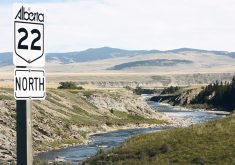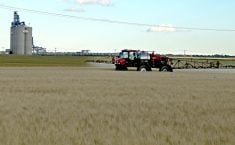Pigeon Lake Watershed Association worries about how manure produced by the operation will affect a nearby lake
Fierce opposition has arisen to a proposed feedlot expansion next to Pigeon Lake southwest of Edmonton.
Opponents of the operation say they are fighting to protect one of the few natural large water bodies on the central Alberta prairie.
The proposal by Ponoka-based G&S Cattle would see the existing 1,000 head feedlot located west of Pigeon Lake increase by 4,000 animals.
Opponents say that move runs counter to decades of efforts by lake residents to protect and restore the lake.
The County of Wetaskiwin provided initial comments in March to the Natural Resources Conservation Board (NRCB), which is the approval body for confined feeding operations, (CFOs). The rural municipality has since asked for an environmental assessment.
Read Also

New coal mine proposal met with old concerns
A smaller version of the previously rejected Grassy Mountain coal mine project in Crowsnest Pass is back on the table, and the Livingstone Landowners Group continues to voice concerns about the environmental risks.
In an April letter, the county highlighted concerns about the increased manure the CFO would produce.
“Calculations need to be considered as to the ability of the land to retain the nutrients, as well as the water quality leaving the land including pathogens, phosphorus and chemicals among a variety of other possible contaminants,” stated the letter.
Catherine Peirce, executive director of the Pigeon Lake Watershed Association, said a dozen municipalities signed onto a management plan for the lake and its tributaries.
“For us, this size of industrial agricultural operation — intensive livestock operation — is counter to the objectives of the plan,” said Peirce. “Our plan is to reduce frequency and intensity of harmful algae blooms at Pigeon Lake and to improve the health of the watershed and lake.”
She said the watershed group was formed to improve the health of the lake and has spent millions toward that goal, including upgrading sewer systems and placing restrictions on cosmetic fertilizer use by residents.
An expansion could upend those efforts because two tributaries that feed the lake run through the area, said Peirce.
“I’m not sure (G&S Cattle) is as aware of the hydrological issues on that property,” she said, adding her group plans to contact the company.
Peirce said her group welcomes the request by the county for an extension of the approval process to complete an environmental assessment.
She said she expected an NRCB decision within six months and the watershed group is preparing for an appeal if the CFO expansion is approved.
Area resident Jeanette Hall said the application process for CFOs is rife with problems, including notification of affected parties and timelines to voice concerns.
“We were in shock,” said Hall about first hearing about the application, largely spread by word-of-mouth.
Hall also said too few safeguards are in place to ensure approved numbers on feedlots are followed and existing regulations are adhered to.
“What’s so frustrating is that despite everybody’s effort, millions of dollars, united communities, everybody around the lake wants this lake to survive. It’s being undermined by this feedlot,” she said.
Hall highlighted the recovery of fish stocks, which once were able to support a commercial whitefish operation and reduction in number of algae blooms as successes in recent years.
As an individual with a background in agriculture specializing in regenerative grazing practices, Hall said this issue shouldn’t be seen as a rural versus urban conflict.
“If this was in any other location, there wouldn’t be this push back,” said Hall. “The fact it’s an application like this right next to a lake where we can clearly see the impacts — this is such a bad industry practice.”
In an April 21 news release, the County of Wetaskiwin pointed out that municipalities do not have the ability to approve or deny CFO applications. That responsibility lies with the NRCB.
G&S Cattle owner Greg Thalen was contacted for comment but had not replied as of publication deadline.


















